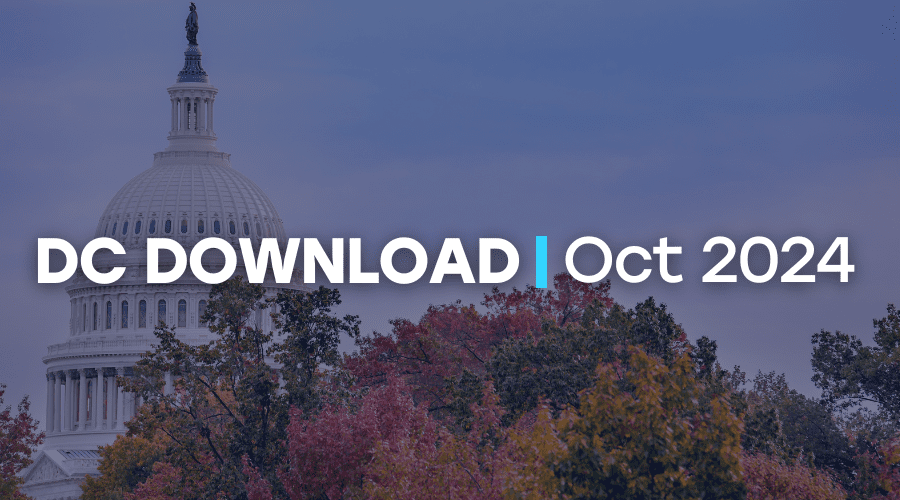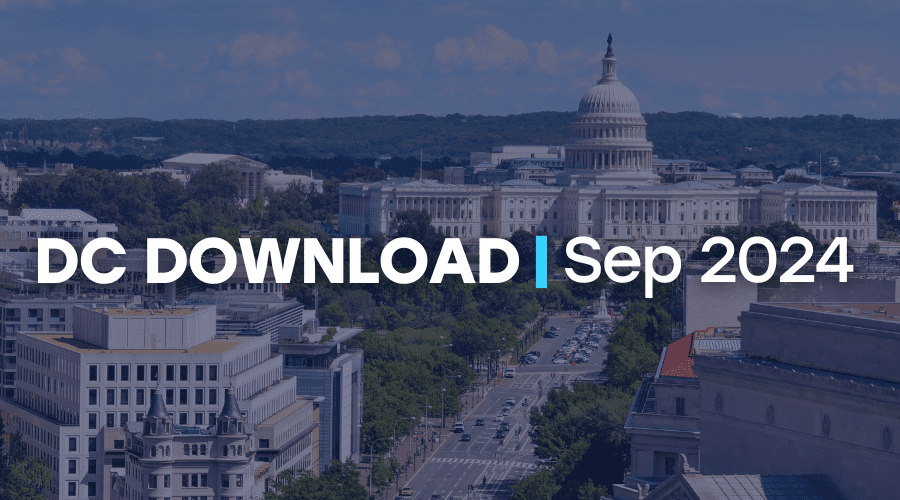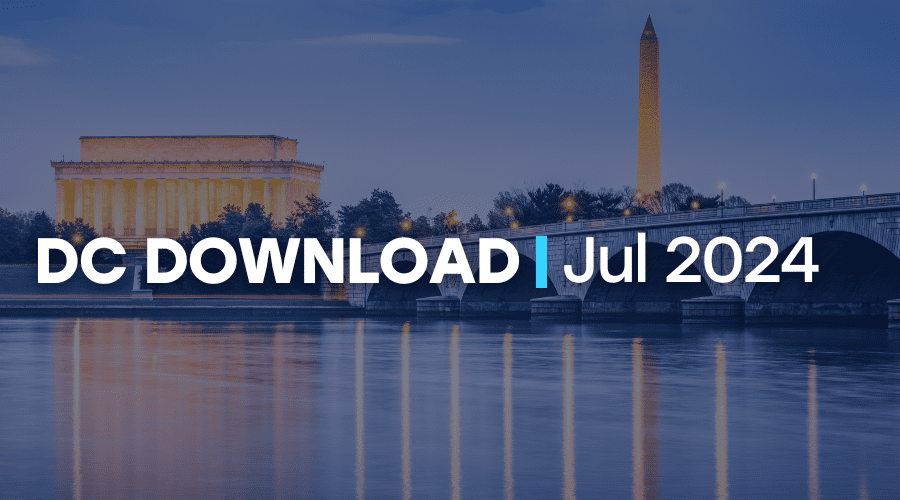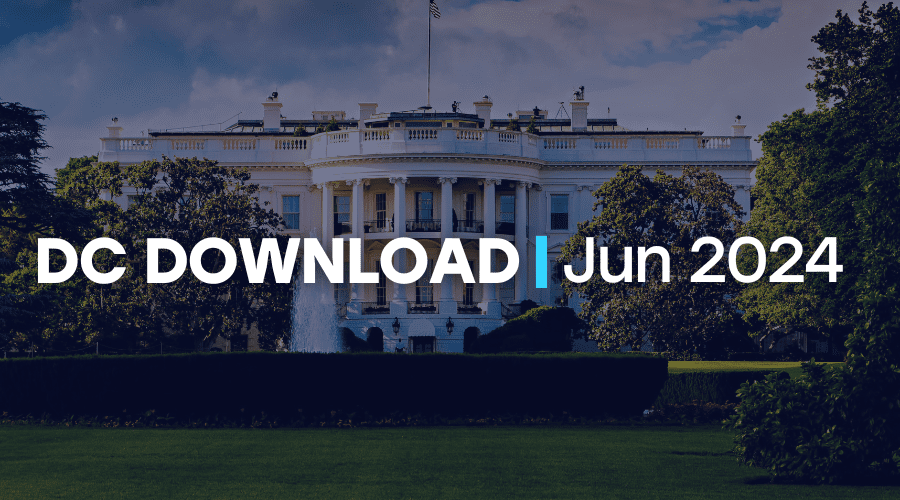October is National Sausage Month, a time to savor the rich flavors and versatility of one of America’s most beloved foods. It’s hard not to draw a parallel between sausage-making and the legislative process — particularly in Congress, where the “sausage” of charitable sector policy is crafted. Just as creating the perfect sausage requires a careful blend of ingredients, legislation advancing the charitable sector relies on balancing diverse interests to ensure the sector can thrive. Much like the unseen complexities of sausage-making, the work behind the scenes that sustains the charitable sector often goes unnoticed, though its impact is felt daily in communities across the country. In Congress, policies that shape how resources are allocated and how organizations meet their missions are crafted in a similarly dynamic and often messy process that, when done right, yields something vital for society.
Government Funded through December
On September 26, 2024, President Biden signed H.R. 9747, which extended federal agency funding at Fiscal Year 2024 levels until December 20, 2024, and averted a government shutdown. This bill passed Congress on September 25 by a vote of 341-82 in the House, and 78-18 in the Senate. This continuing resolution punts the FY25 appropriations fight to the lame duck session, so at this point it’s difficult to say what will happen next. If either political party wins a trifecta government (controlling the House, Senate, and Presidency) on Election Day, that party will likely only be interested in passing another short-term funding bill so they can take up bills next year when they have full control. If we remain in a divided government after the election, there may be more incentive for Congress to complete the FY25 funding bills before they adjourn on January 3, 2025.
IS Urges President to Take Executive Action on Nonprofit Workforce Data
On October 7, 2024, more than 600 charitable sector organizations and researchers from all 50 states sent a letter to the Biden-Harris Administration urging the President to take executive action directing the Bureau of Labor Statistics (BLS) to include nonprofit workforce data in the Quarterly Census of Employment and Wages (QCEW). The BLS serves as an invaluable resource to the public and government agencies at all levels of government by providing gold-standard statistics and analyses that are accurate, objective, relevant, timely, and accessible. However, the BLS currently only releases nonprofit wage and employment data every five years, or longer. Through this proposed executive action, public officials and nonprofit employers will have more timely and accurate data to make decisions about organizational strategy and workforce projections.
Legislators Prepare for 2025 Tax Legislation
On October 15, Independent Sector President and CEO Dr. Akilah Watkins sent an eleven-page letter to the Senate Finance and House Ways and Means Committees in preparation for the upcoming 2025 tax debate. In 2017, the Tax Cuts and Jobs Act was enacted making significant changes to U.S. tax policy. The 2017 changes, which were implemented in 2018, are set to expire at the end of 2025.
Dr. Watkins’ letter details key priorities for the charitable sector in the 2025 tax reform bill, including restoring the charitable deduction, increasing the charitable mileage reimbursement rate, and tax incentives for nonprofit employers, among other things.
The outcome of the November 2024 elections will play a significant role in shaping what the 2025 tax reforms look like. If either party wins a trifecta, it’s expected that tax reforms would likely happen via the reconciliation process to circumvent the Senate’s filibuster rule, which requires 60 votes for passage. The party with the trifecta would likely use the tax reform process to implement their tax priorities with little input from the minority party. If the election keeps us in a divided government, we will likely see a very different bill, one that can pass with much broader bipartisan support.
New OMB Uniform Guidance Takes Effect
In April, the Office of Management and Budget (OMB) issued the most substantial revision to OMB Uniform Guidance in a decade. These changes — which OMB directed all federal agencies to implement no later than October 1, 2024 — include many positive developments for the sector including:
- Raising the guaranteed de minimus rate for indirect costs from 10% to 15%
- Revising Notices of Funding Opportunity to make them more easily readable by potential applicants
- Increasing the single audit threshold from $750,000 to $1,000,000
- Increasing the equipment purchased using Federal funds threshold from $5,000 to $10,000
- Increasing the exclusion of subaward costs from $25,000 to $50,000 for modified total direct costs
For more information about this newly implemented OMB guidance, please check out the Nonprofit Analysis of OMB Uniform Guidance Final Rule fact sheet, published by the National Council of Nonprofits.
Court-Imposed Student Loan Forbearance Expected to Extend Into 2025
In August, the 8th Circuit Court of Appeals issued a sweeping injunction against the Saving on a Valuable Education (SAVE) student loan repayment plan, which was established by the Biden-Harris Administration in July 2023. The Administration appealed the ruling to the U.S. Supreme Court, which on August 28, declined to lift the injunction while the appeals process plays out. The case working its way through the judicial system is not challenging the legality of the Public Service Loan Forgiveness Program (PSLF), which forgives any unpaid loan balance after 120 payments are made while the borrower works for a qualifying employer, which among others includes 501(c)(3) nonprofits. However, many borrowers working toward PSLF are enrolled in the SAVE program and have had their loans placed in a general forbearance while this case plays out; time in this forbearance will not be counted toward their 120 PSLF qualifying payments. Initially this forbearance was scheduled to remain in place until October 31, 2024, though on October 22, 2024, the Washington Post reported that mandatory forbearance could be extended into summer 2025. PSLF advocates have requested that the President use executive action to allow time in this forbearance to count toward borrower’s PSLF qualifying payments, as was the case during the COVID student loan forbearance, however the president has not yet taken action on this request.
Travis Swanson is the Government Relations Manager at Independent Sector



